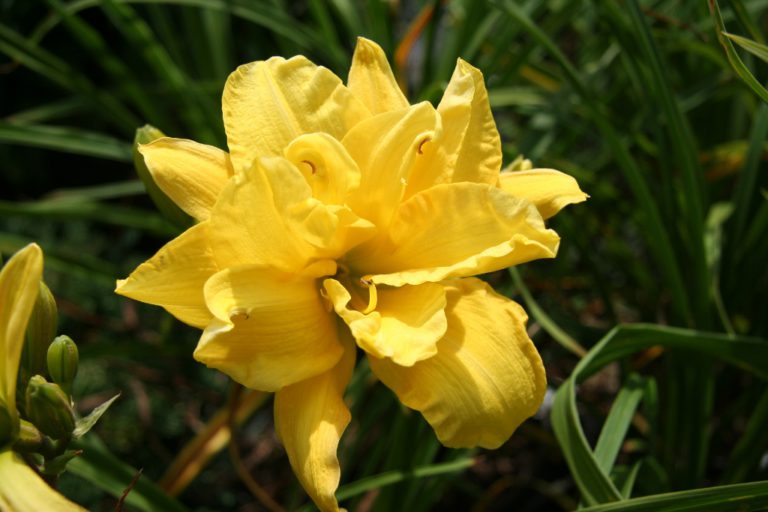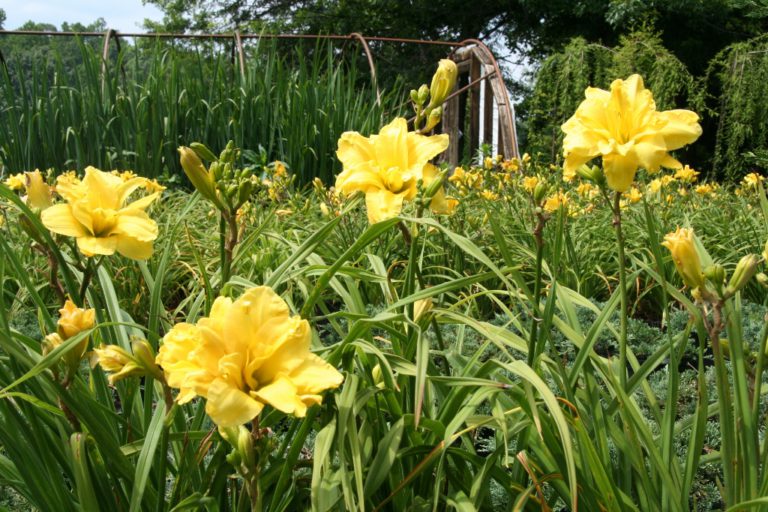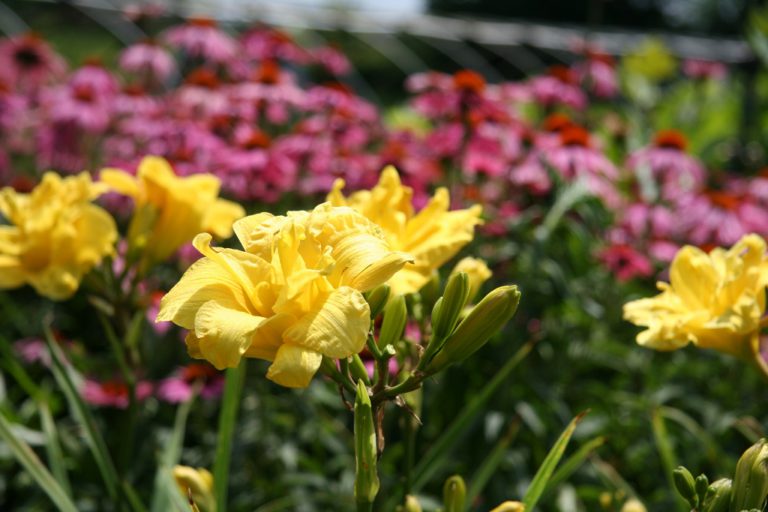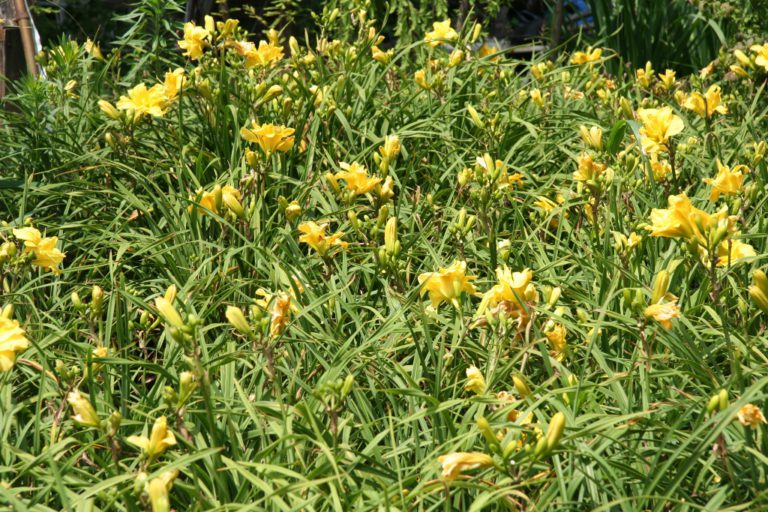Home of Connie Marks daylily
Connie Marks Daylily
The email form now works! If you sent an email before February 4, 2022, then it was not received.
‘Connie Marks’ daylily was discovered in the cultivated area when it first bloomed during the summer of 2001 at a commercial nursery/garden center located in Culpepper, Virginia. The plant ‘Connie Marks’ was an asexual offspring of an American Hemerocallis society registered daylily named ‘Hyperion’ which was registered in 1925.
Asexual offspring refers to the fact that ‘Hyperion’ was the only other daylily growing in the nursery garden vicinity where ‘Connie Marks’ was discovered. The large ‘Hyperion’ clump had a smaller six fan, double yellow flowered ‘Connie Marks’ clump growing on its perimeter. ‘Hyperion’’s flowers are single. The plants has been successfully propagated by division methods at the same nursery to produce identical plants that maintain the unique characteristics of the original. Since 2001 the original six fan ‘Connie Marks’ has been repeatedly divided to produce numerous pants that are phenotypically identical.
What makes Connie Marks daylily unique
The following traits have repeatedly been observed and represent the characteristics of ‘Connie Marks’.
These attributes, in combination, distinguish ‘Connie Marks’ as a new and distinct cultivar.
Connie Marks has a propensity to form the plurality of scapes per fan, two scapes per fan per bloom period
Connie Marks is heat and cold hardy to a wide range of hardiness zones – USDA No 3 – No 7
Connie Marks has a delicate perfumed fragrance
Connie Marks has an extended bloom period from early June until the end of July
Connie Marks cleanly sheds spent flowers to allow new buds to fully develop
The plant readily propagates by division and exhibits moderate rate of multiplication of three or more fans per fan per year
Connie Marks is resistant to daylily rust Puccinia hemerocallidis



